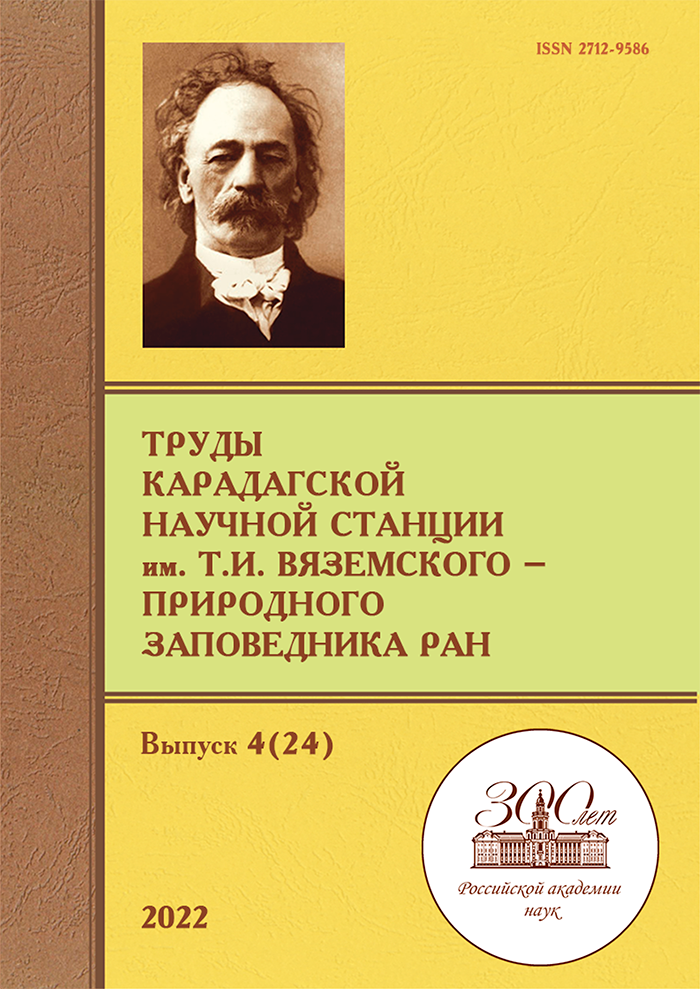Классификация и картирование ландшафта островов Чыонг Ша (Вьетнам) в масштабе 1:250 000
##plugins.themes.ibsscustom.article.main##
##plugins.themes.ibsscustom.article.details##
Аннотация
Изучение морских ландшафтов — новое направление современной географии, сформировавшееся и развивающееся в странах Запада, в России и других странах. Во Вьетнаме исследования морских ландшафтов всё ещё очень ограничены. На основе концепции применения дистанционного зондирования — ГИС и комплексных полевых методов — была создана система классификации и составлена ландшафтная карта островов Чыонг Ша в масштабе 1:250 000. Исследуемая территория включает 1 систему, 1 подсистему, 4 класса, 7 подклассов и 20 типов ландшафта, на которой морские ландшафты отличаются большим разнообразием: 3 класса, 6 подклассов и 19 типов ландшафтов. Класс островного ландшафта включает только 1 ландшафтный тип тропической островной растительности. Морской мелководный ландшафтный класс (0–200 м) занимает небольшую площадь, но дифференцирован и состоит из двух классов (50 % от общего числа классов) и девяти типов (45 % от общего числа типов). Ландшафт тропических островов сильно изменён как сплошным растительным покровом, так и гидрологическим режимом, при котором многие образования имеют почвенный покров, смешанный с растительностью материковой и островной флоры. Ландшафты прибрежного мелководья, особенно ландшафты в диапазоне глубин 0–100 м, в основном состоят из кораллов и других групп рифовых организмов. Ландшафтные структуры островов Чыонг Ша отражают не только характеристики составляющих их компонентов, но и динамику ландшафта, особенно морского.
Авторы
Библиографические ссылки
Arzamastsev I. S., Preobrazhenskii B. V. Atlas of Underwater Landscapes of Sea of Japan. – Moscow : Nauka Publ., 1990. – 224 p.
Berg L. S. O sterlyadi v basseine Belogo morya // Priroda. – 1945. – No. 6. – P. 66–67.
Dang Thi Ngoc, Nguyen Cao Huan, Nguyen Dang Hoi, Tran Van Truong, Ngo Trung Dung. Classification system and landscape characteristics of coastal areas of Quang Ngai Province // Earth and Environmental Sciences. – 2020. – Vol. 36, no. 4. – P. 52–63. (in Vietnamese). – https://doi.org/10.25073/2588-1094/vnuees.4589
English S., Wikinson C., Baker V. (eds). Survey Manual for Tropical Marine Resources. – 2nd edition. – Townsville : Austral. Inst. of Marine Science, 1997.– 390p.
Golding N., Vincent A., Connor W. IrishSeaPilot-ReportonthedevelopmentofaMarineLandscape classification for the Irish Sea. – Peterborough, UK : Joint Nature Conservation Committee, 2004. – 95 p. – (JNCC Report ; no. 347).
Hill M., Briggs J., Minto P., Bagnall D., Foley K., Williams A. Guide to Best Practice in Seascape Assessment. – Dublin, Ireland : The Marine Institute, 2001. – 58 p. – (Maritime (Ireland / Wales) INTERREG Report ; no. 5).
Laffoley D. A., Connor D. W., Tasker M. L., Bines T. An implementation framework for conservation, protection and management of nationally important marine wildlife in the UK. – Peterborough, UK : English Nature, 2000. – 33 p. – (English Nature Science Report ; no. 394).
Lebedev A. M., Egidarev E. G., Pianov A. A., Zharikov V. V., Yugay I. G. Research of bottom landscapes of the Kathba archipelagus (Tonkinsky Bay, South China Sea) // Shore Research in Pacific Russia : collection of scientific articles. – Vladivostok : Publishing House of Far Eastern Federal University, 2019. – P. 96–108. – https://doi.org/10.24866/7444-4825-7/96-108 (in Russ.).
Nguyen Dang Hoi, Ngo Trung Dung, Kuznetsov A. N. and Vu Le Phuong. Classification and mapping of marine-island landscape in Nam Yet Island, Truong Sa Islands, Vietnam // Vietnam Journal of Earth Sciences. – 2022. – No. 4. – P. 481–501. – https://doi.org/10.15625/2615-9783/17178
Nguyen Ngoc Khanh, Nguyen Cao Huan, Pham Hoang Hai. Study on Vietnamese landscape taxonomies at 1:1,000,000 scale (land and sea). – Journal of Science, VNU. Journal of Geography, 30th anniversary issue of Geography. – Hanoi, 1996. – P. 15–21. (in Vietnamese).
Nguyen Thanh Long, Nguyen Van Vinh. Initially classifying Vietnam’s sea and island landscape // Proceedings of the 6th National Geographic Science Conference. – Hanoi : Natural Science and Technology Publishing House, 2012. – P. 107–115. (in Vietnamese).
Preobrazhensky B. V., Zharikov V. V., Dubeikovsky L. V. Osnovy podvodnogo landshaftovedeniya (upravlenie morskimi ekosistemami). – Vladivostok : Dal’nauka, 2000. – 233 p. (in Russ.).
Roff J., Taylor M. National frameworks for marine conservation? A hierarchical geophysical approach // Aquatic Conservation: Marine and Freshwater Ecosystems. – 2000. – Vol. 10, iss. 3. – P. 209–223. – https://doi.org/10.1002/1099-0755(200005/06)10:3<209::AID-AQC408>3.0.CO;2-J
Tran Anh Tuan. The scientific basis and methodology for integrated assessment of natural conditions and resources for orientation of the development of offshore waters and islands, apply to Truong Sa archipelago // Vietnam Journal of Marine Science and Technology. – 2013. – Vol. 13, iss. 4. – P. 324–334. (in Vietnamese). – https://doi.org/10.15625/1859-3097/3540

 Google Scholar
Google Scholar